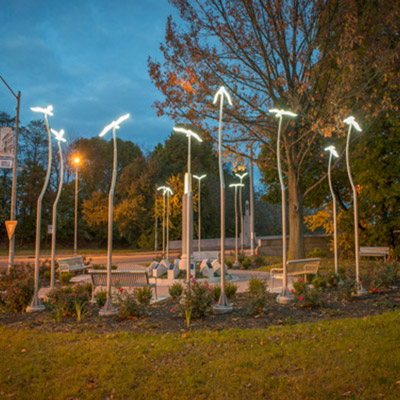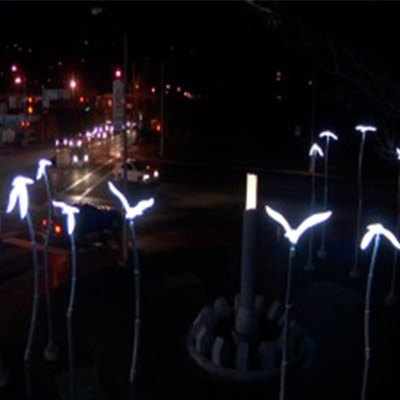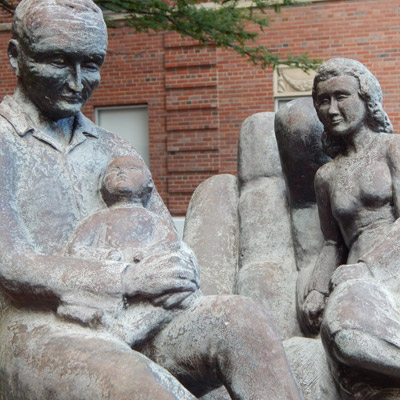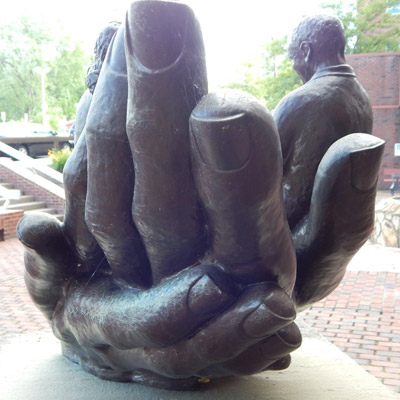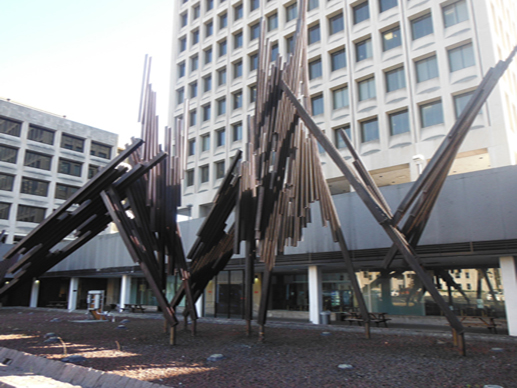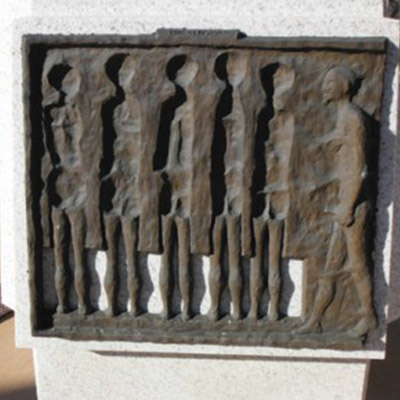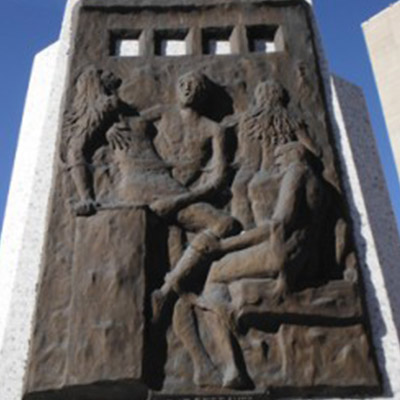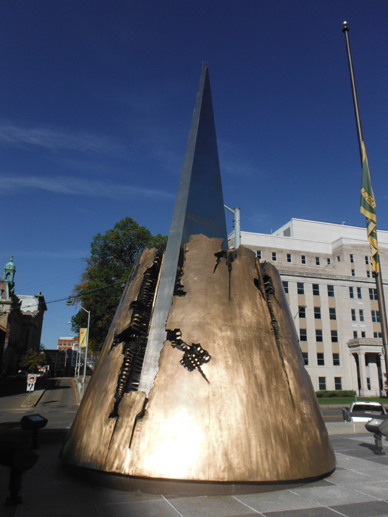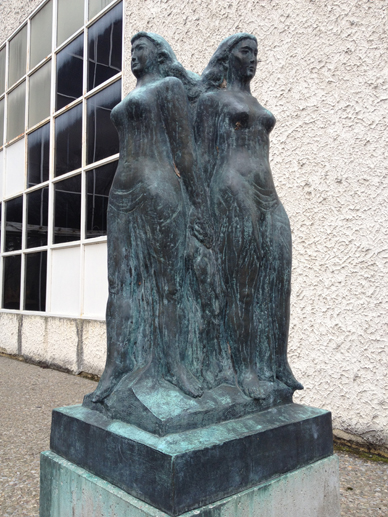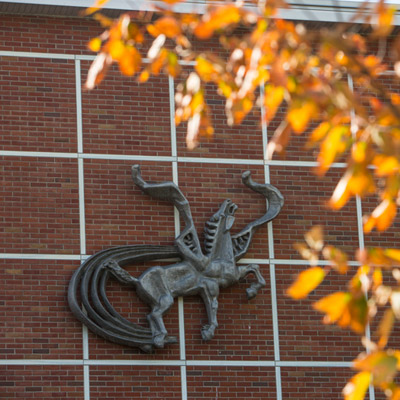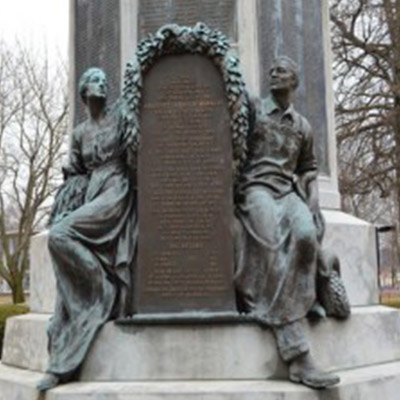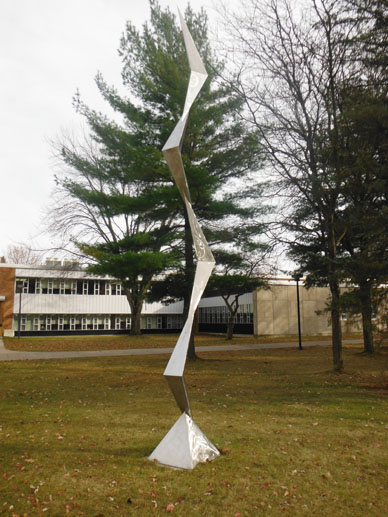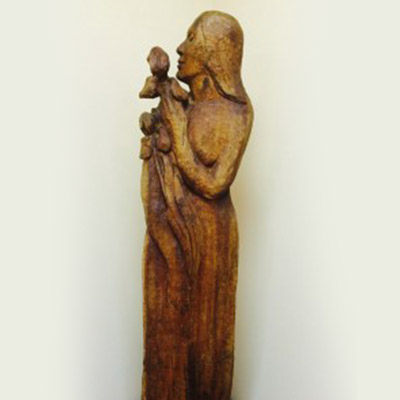Reviewed by Sarah Kuras
An incredible collaboration between Binghamton University’s Nukporfe African Dance-Drumming Ensemble and the BU Music Department’s string faculty lit the Anderson Center Chamber Hall stage this past Sunday (April 15). In a mix of worlds, culture and music, Professors James Burns, Stephen Stalker and Janey Choi created a new musical world for the audience. Blending classical and traditional African music, the collaborators created an entirely new delight.
As a longtime member of Nukporfe, I was excited to see my peers perform in a different capacity, working with other musicians. The performance opened up with a casual meeting of the string players — Janey Choi and James Hsia, violins; Benjamin Pochily, viola, and Stephen Stalker, cello — who seemed to have stumbled across an African village. They began to play the second movement of Kevin Volans’ String Quartet No. 1 (White Man Sleeps), inspired by Nyaga panpipe dance. During this work, members of the village, Nukporfe, walked on stage and started watching and mimicking their movements. What the professors hoped to portray was a literal meeting of two worlds. After the movement finished, the narrator came out and thanked the musicians for playing, welcomed the audience to their “village” and implored the dancers and musicians to perform for the visiting musicians.
Between each piece, the narrator told traditional folk tales about Anansi, the spider, leaving the audiences with the lessons learned and introducing the next work. The second number was Togo Atsia, a dance performed with horse tails waved around in specific movements. The movements, “atsia,” are from Togo, and this piece is a staple of the Nukporfe repertoire, with only the most skilled dancers performing.
Following this traditional piece was a composition by Burns entitled Rhapsody on a Set of Ewe Songs. He ingeniously arranged traditional melodies from the Ewe people of Ghana for string quartet, used traditional rhythms and choreographed new “atsia” movements for a spectactular new piece. I recognized many of the melodies from my years of study as a Nukporfe ensemble member, which made it all the more enjoyable. The string arrangement was somewhat eerie at times since I am used to vocal accompaniment.
The next two pieces were based on two works by Bach, Fugue from the Toccata in G minor and Prelude in C major. They had been arranged for string quartet by Burns and Peter Martin, respectively. Burns added traditional Afro-Cuban drumming styles as accompaniment to both. The dance soloisst represented different Orisha, or deity, of African (Yoruba) origin. Marcel March, adjunct and BU graduate 2010, created new movements for the dancers that were in the right style and flavor of the dance genre.
Finally, with another newly choreographed dance/drama, the collaborators finished the program with Mai Nozipo (Maraire). The newly written drumming parts were from the Ga Kponlogo rhythm from Ghana.
Overall, it made me incredibly happy to see so many talented artists on one stage, doing what they love. The students who performed as part of the string quartet and drumming ensemble or as dancers were excellent, and their performances attest to the great training they have had at BU and the passion they have for their craft. It was wonderful to see the music faculty working together despite their varied interests and fields of study.
I applaud the music department for putting on such a musically important production. I believe the time has come for more collaboration, more diverse performances and more sharing of culture.
For more music department productions, visit http://www2.binghamton.edu/music/concert-performances/index.html.

